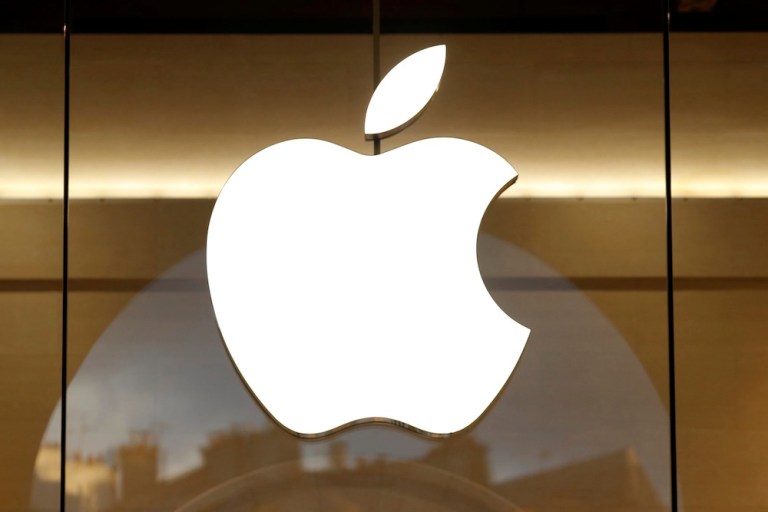
Forecasting anything is hard work — a fact proven by the anchors at the Weather Channel who have been awake for at least three days trying to nail down the path and potential devastation of Hurricane Florence. Hard and uncertain work, as forecasters can do their level best, and still find their predictions wrecked in the face of some last-minute surprise.
But every once in a while the tea-leaf readers — either through brilliant deduction or just good guessing — manage to call things exactly right. Such was the the weather, so to speak, at Apple’s annual device rollout event. There were advances, a few interesting upgrades, a plethora of inspirational videos about the historical implications of the forthcoming class of Apple products and a lot of enthusiasm on the part of the Apple team.
It was everything everyone waiting for today’s event expected, with no big or unexpected fireworks.
But the world did get a peek at three new variations on the iPhone X, a new version of the Apple Watch that can double as a portable EKG machine strapped to your wrist, and Siri and the Home Pod got a few much-requested updates — all of which seemed to be more than adequate to get tech people talking.
The New Phones
It was an uncharacteristically leaky year going into the big launch announcements, meaning much of the fundamental details about the iPhone XS, XS Max, and XR were more confirmed than revealed on stage at the Steve Jobs auditorium. The smaller of the new top-line models, the XS comes with a 5.8-inch Super Retina OLED display; XS Max bumps the screen up to 6.5 inches. Both models are more waterproof, boast an upgraded A12 bionic chip and feature a major camera upgrade with the new Smart HDR sensor. The phones also have an increased battery life — 30 minutes longer — and the ability to support dual SIM, meaning users can set up primary and secondary numbers and know specifically which of the two is being contacted.
These are Apple’s $1,000 phones of 2018: the XS will start at $999; the XS Max will start at $1,099.
The third iPhone model, which some had thought would be called the iPhone 9 but was instead branded the XR, is a slightly less advanced version of the iPhone X, coming with a slightly thicker bezel, 6.1-inch LCD (as opposed to OLED) screen and without 3D touch. It will, however, have Face ID and will not have a home button. It also comes in a wider array of colors and has a much lower starting price tag than the XS: $749.
The New Watch
Again, given the less than airtight data management out of Apple pre-event, the launch of the Apple Watch Series 4 was expected and mostly made official at the event. The device comes out of the box with a larger screen, better speakers, a slimmer body and a crown with haptic feedback.
The new Apple Watch also continues the trend of offering the wearable as a health-services device, with the new version wired to detect unusually low heart rate and irregular rhythm symptomatic of atrial fibrillation. The Series 4 has also reportedly been approved by the FDA to measure a wearer’s EKG by holding the wearer’s fingertips to the digital crown for 30 seconds.
The HomePod/Siri Drive-By
Voice ecosystems are becoming an increasingly important part of the conversation about commerce and the future of digital connects — not to mention a highly competitive arena where Google and Amazon are the primary players currently slugging it out. So it was perhaps a bit odd how neither Siri or the HomePod released at this event last year had all that much presence at this year’s event.
Apple CEO Tim Cook briefly tipped his hat to the HomePod, noting improvements which will allow users to search song lyrics, sync devices and set timers.
Off the main stage, however, some updates on Apple’s rather cautious approach to voice and voice-activated speakers did start to roll out. Apart from timers and song lyrics, Apple also announced that HomePod can now make and receive phone calls, help users find lost phones and make it easy for users to tap into shortcuts so that a key phrase like “Hey Siri, good morning” can prompt Siri to run an entire morning routine from ordering groceries to turning on household lights. The company also noted additional support for Spanish-language users with the addition of Univision Noticias, ESPN Deportes and Telemundo Entretenimiento.
The reviews are still rolling in, but have so far been mostly tepid. The most common and strongly-held opinion out of the event is that the XS Max is really big — even by phablet standards. Whether or not that is a good thing was more discussed, and seemed mostly a matter of phone size preference.
Will it be enough to move products off the shelf? Last month, a survey indicated that consumers are excited about the new iPhones, with 48 percent saying they were interested in upgrading. Apple is offer three versions of a phone that early adopters waited on line for last year — and one of them is at a much lower price point. We’ll see if it will be enough to convince those waiting on the upgrade to buy in — and decide to buy in with Apple.